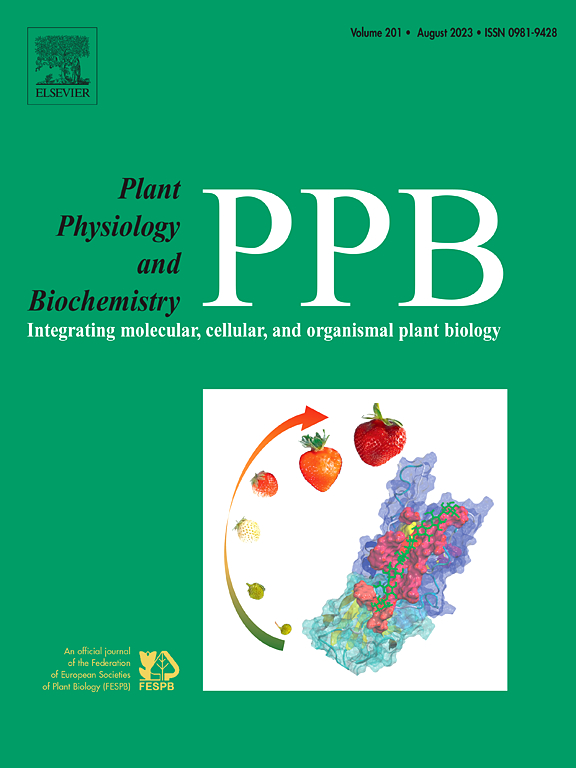Overexpression of SmGRAS5 enhances tolerance to abiotic stresses in Salvia miltiorrhiza
IF 6.1
2区 生物学
Q1 PLANT SCIENCES
引用次数: 0
Abstract
Abiotic stresses limit crop growth and yield. GRAS transcription factors (TFs) are plant-specific TFs that play an important role in many plant processes, including abiotic stress response. However, there are few studies on the involvement of the GRAS gene in stress response in Salvia miltiorrhiza. This study identified a GRAS TF from S. miltiorrhiza, named SmGRAS5, which belongs to the scarecrow-like 3 (SCL3) group involved in root formation. Transcriptome analysis showed that the SmGRAS5 overexpressed (OE) lines of S. miltiorrhiza expressed many genes related to stress response and secondary metabolism. SmGRAS5 was strongly induced by drought and high salinity. Overexpression of SmGRAS5 could improved drought and salt tolerance in transgenic S. miltiorrhiza plants by regulating stress-related genes. Physiological tests showed that transgenic plants had higher chlorophyll content, photosynthetic capacity, superoxide dismutase (SOD), peroxidase (POD), and catalase activities (CAT), which enhanced plant drought resistance and salt tolerance. In addition, the content of tanshinones in transgenic SmGRAS5 was significantly increased, and most genes of related biosynthetic pathways were up-regulated. These results may provide a candidate gene involved in abiotic stress response and secondary metabolism and provide a theoretical basis for elucking the mechanisms of SmGRAS5 in abiotic stress response of S. miltiorrhiza.
求助全文
约1分钟内获得全文
求助全文
来源期刊
CiteScore
11.10
自引率
3.10%
发文量
410
审稿时长
33 days
期刊介绍:
Plant Physiology and Biochemistry publishes original theoretical, experimental and technical contributions in the various fields of plant physiology (biochemistry, physiology, structure, genetics, plant-microbe interactions, etc.) at diverse levels of integration (molecular, subcellular, cellular, organ, whole plant, environmental). Opinions expressed in the journal are the sole responsibility of the authors and publication does not imply the editors'' agreement.
Manuscripts describing molecular-genetic and/or gene expression data that are not integrated with biochemical analysis and/or actual measurements of plant physiological processes are not suitable for PPB. Also "Omics" studies (transcriptomics, proteomics, metabolomics, etc.) reporting descriptive analysis without an element of functional validation assays, will not be considered. Similarly, applied agronomic or phytochemical studies that generate no new, fundamental insights in plant physiological and/or biochemical processes are not suitable for publication in PPB.
Plant Physiology and Biochemistry publishes several types of articles: Reviews, Papers and Short Papers. Articles for Reviews are either invited by the editor or proposed by the authors for the editor''s prior agreement. Reviews should not exceed 40 typewritten pages and Short Papers no more than approximately 8 typewritten pages. The fundamental character of Plant Physiology and Biochemistry remains that of a journal for original results.

 求助内容:
求助内容: 应助结果提醒方式:
应助结果提醒方式:


